2004.12.17 12:15
postpostmoderniam (arrgh)
Postmodernism (in architecture) literally began over 70 years ago with the reaction of the residents to Le Corbusier's Pessac housing.
A serious study of what buildings were under construction in 1950s Rome while Venturi was at the American Academy (e.g., Luigi Moretti's apartments on the Via Parioli) will add much to an understanding of the early genesis of 'postmodernism' as a distinct design methodology.
2005.02.25 11:49
Re: [dis]content .1
One flaw in architecture culture I'd like to see fixed is for 'history' to portray late Roman architecture and early Christian architecture within at least the same 'chapter'. The two 'styles' really played an integral role with each other, and that 'history' isn't even addressed, let alone recognized.
2005.04.04 09:57
Rome before St. Louis
The arch proposed for the Esposizione Universale Roma 1942 -- EUR...
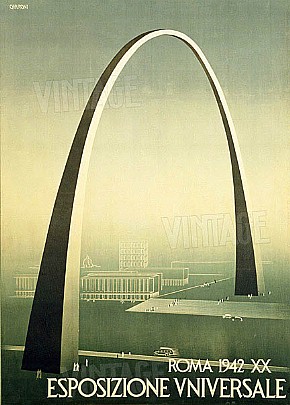
...was designed by Adalberto Libera in 1937-1942.
The St. Louis Arch design was won by Saarinen in a 1947 competition.
| |
2005.04.08 11:43
modernity/post-modernity
As soon as the inhabitants of Pessac began to alter the appearance of their homes counter to the modern 'purism' of Le Corbusier's design, might just pinpoint the beginning of post-modern architecture.
2005.04.08 12:25
modernity/post-modernity
Does it say anywhere that modernism must end as soon as post-modernism begins?
If so, then who writes these rules?
[Did Judaism end as soon as Christianity began? Did Christianity end as soon as Islam began?]
2005.04.08 19:12
modernity/post-modernity
The religious analogy employed is not a stretch when you consider how this thread began, specifically in reference to a "paradigmatic shift". Christianity is a paradigmatic shift vis-à-vis Judaism, and Islam is (in part) a paradigmatic shift vis-à-vis Christianity.
Interestingly, the rise of Christian architecture did coincide with the end of 'classical' Pagan architecture--not long after Christian basilicas were built in Rome and Judea (under the supervision of St. Helena), the legislature under Constantine I (the son of St. Helena) began to steadily outlaw Pagan cults. Ultimately, under emperor Theodosius I, all Pagan cults within the Empire were outlawed, hence no more classical Temples.
[Is what I do modern or is it post-modern? Honestly, I don't care.]
Was it European Colonialism that began the end of many indigenous architectures throughout the "non-Western" world? Can the 'international style' of CIAM be seen somewhat as an extension of Colonialism?
[These are questions that interest me much more than whether Gehry is modern or post-modern.]
2005.04.29 17:04
Sexual Architecture??
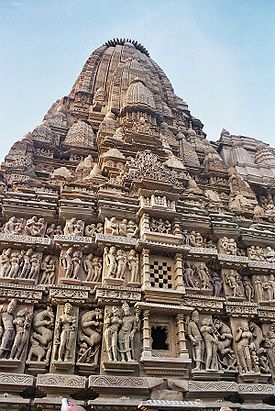
The Khajuraho Temples (circa 950-1150 AD) happened chronosomatically when the plane of the present sliced through the ovaries, hence manifesting an architecture of high fertility. Can there still be an architecture where the fertile imagination is utilized with such profundity?
| |
2005.07.21 18:14
Demolition vs. Restoration
I know that demolition of many 1960s and 1970s buildings is inevitable, but, with the ease of digital photography today, these buildings should at least be preserved with lots and lots of images. In many ways, I see the concrete hulks of the 60s and 70s as a rare moment in architectural history, and such sentiment probably won't be popular until most of them are gone.
2005.08.16 11:28
the agnostic design of spiritual space
I have some ideas about how to design sacred space, and they have to do with making it osmotic and electromagnetic. Some of Kahn's best architecture is osmotic and electromagnetic.
2005.08.23 13:28
Tiring architects VS Real Architects
The late period of artists is often under-rated. Picasso's Late Period was mostly disliked while he was alive--seen as repetitious and unimportant. Yet, with Picasso dead, the late works are not so unimportant anymore, in fact they manifest one of Picasso's most creative periods.
Frank Gehry may be in a wonderful position if he continues to do architecture for another decade or so, because, when he isn't around anymore, his late works might just manifest his most creative period.
I like to look at and study the late periods of artists because of all the facile-ness and confidence and even (if you're lucky) the "I don't give a damn" found there.
Philip Johnson produced an interesting late period, and he did change 'styles' with every new project, yet his overall style has always been reenactionary architecturism.
2005.09.08 10:54
are the origins common ? can we prove it ?
Do a thesis on the commonality of brainwashing within architectural education within say the last two to three decades. Brainwashing in the sense of becoming blind to what is otherwise self evident. For example, is the Villa Savoye really a house? Yes, it's design intention was for it to be a house, but that's not what it really turned out to be, is it?
2005.09.08 12:04
are the origins common ? can we prove it ?
I was yesterday thinking of the Villa Savoye as a museum, perhaps specifically a museum of Modern architecture even?
What seems to be most common among creation/origin myths is indeed duality. The first paragraphs of Genesis, for example, are replete with dualities, and the notion of (generally good and evil) twins is found in creation/origin myths from all over the globe.
2005.09.08 11:13
Hadrian was born in Spain
Hadrian is often credited with being the 'architect' of the Pantheon. Should he then be considered a foreign architect as far as Italy is concerned?
Maxentius was perhaps born in Syria, like his mother Eutropia; his father Maximian was born in (today's) Serbia.
Constantine too was born in Serbia, although his mother Helena was born in (today's) Turkey.
The architecture of Eutropia and Helena had an astounding effect on Italy.
| |
2005.09.08 12:58
Hadrian was born in Spain
The truth is that we really don't know whether Hadrian ever performed as an architect or not, but there isn't doubt as to his making "artistic contributions." Was architecture a strict 'profession' back then, or was architecture sometimes 'practiced' by those that had the power and inclination to do so?
Did Hadrian read and study Vitruvius or even some (better?) architecture 'books' that we don't even know about anymore? The reality is that we don't know. What we do have is the evidence of the architecture itself.
2005.09.08 13:48
Hadrian was born in Spain
The reality is that we really don't know to what extent Hadrian "designed" any buildings. That Hadrian was Emperor supersedes his "practicing" any other "occupation." A good example would be the relationship between Schinkel and Crown Prince (later King) Friedrich Wilhelm IV where one of the Prince's sketches is almost exactly what Charlottenhof is today. Yes, Schinkel is the architect of Charlottenhof, but Friedrich Wilhelm IV is Charlottenhof's original designer. It's strange though because Friedrich Wilhelm actually "couldn't" be an architect because that was beneath his station. Hardian could well have designed a lot of buildings, but for someone back then to call him an architect may have at the same time amounted to insulting his (higher) station.
Today we call the designer of a building the architect, even though there are many more people (including other architects) involved in the development and production of architecture.
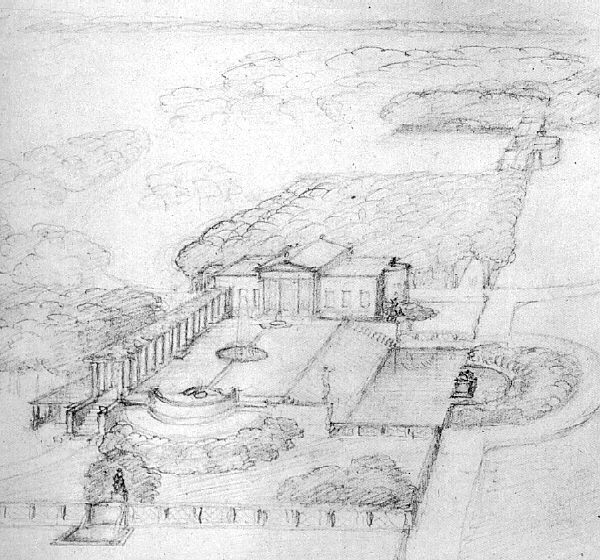
"The Crown Prince [later Friederich Wilhelm IV] counted Schinkel as one of his teachers, at least as far as architecture and drawing were concerned. Schinkel's instruction to the Crown Prince was always based on concrete examples from his practice. The prince accompanied the creation of the Charlottenhof park and palace with an unusually large number of sketches and plans, and esteemed his own part in the planning very highly."
Heinz Schönemann, Karl Friedrich Schinkel: Charlottenhof, Potsdam-Sanssouci, 1997.
| |
2005.09.08 14:09
Hadrian was born in Spain
The Crown Prince sketched lots of architectural designs, and, had he the money, he likely would have had them all built.
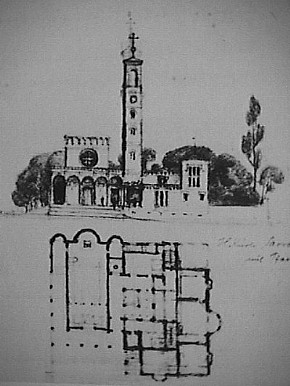
Sketch for a Church at Sakrow

Sketch for a Polytechnikum on Königsplatz
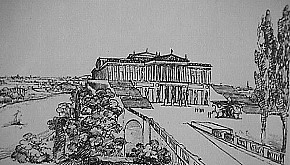
Design of Schloß Belriguardo on the Tornow
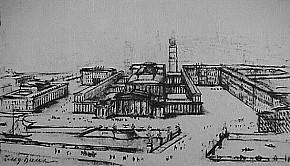
Design of the Berlin Dom
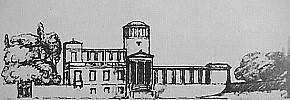
Sketch of Schloß Lindstedt
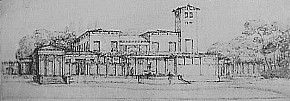
Sketch in connection with the Gardener's Villa in Sanssousi
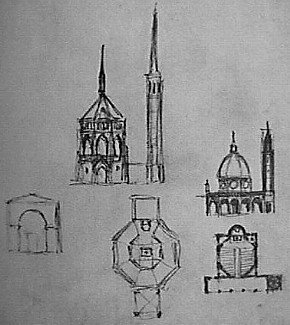
Sketch of central churches
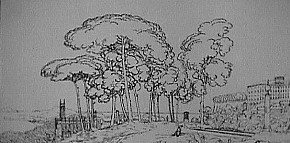
Ideal landscape with church
Ludwig II had tons of money (the Wittelsbach Treasury in Munich is still the most valuable in Europe), and "his" (reenactionary) architectur(ism) did get built. Yes, Ludwig employed several architects, but hardly a design (sketch/drawing) got by without his changes and ultimate approval.
|